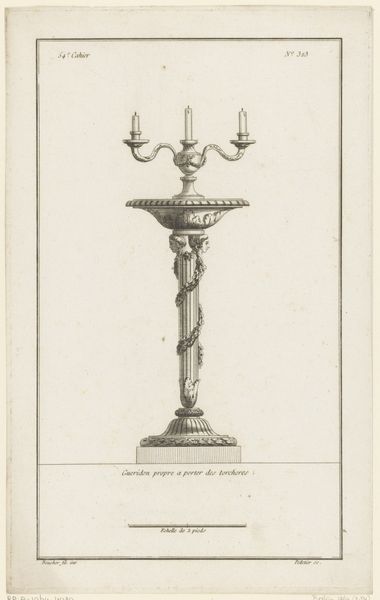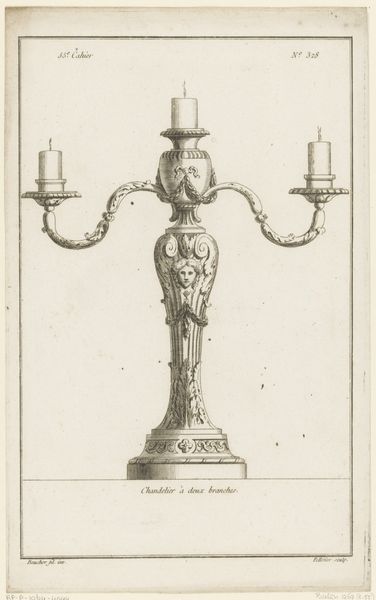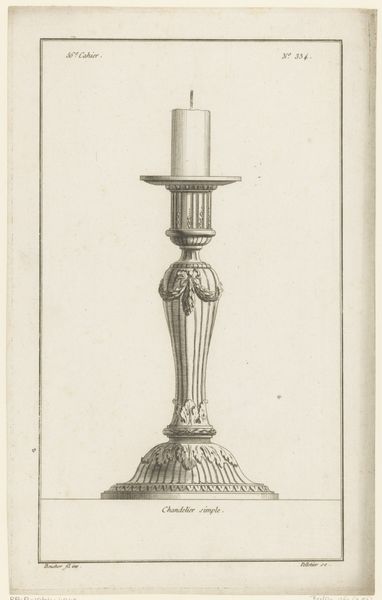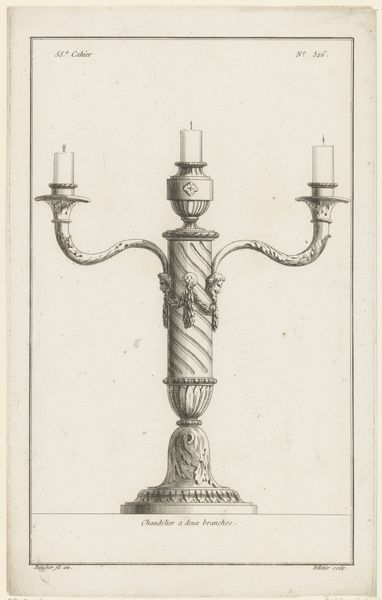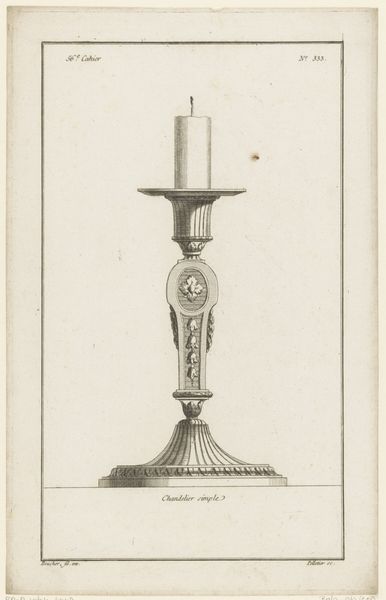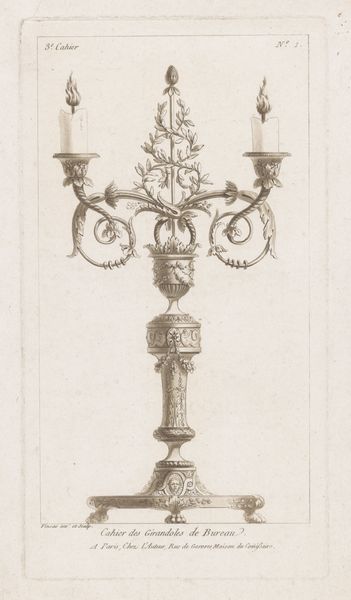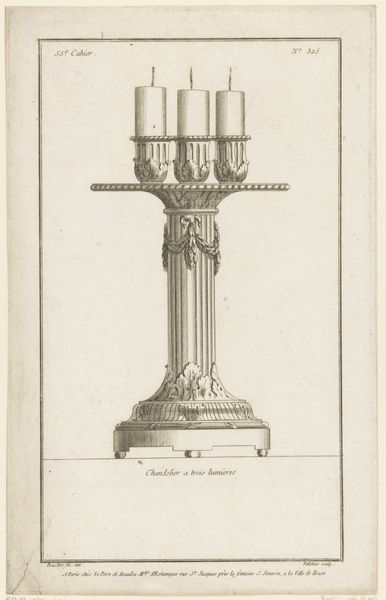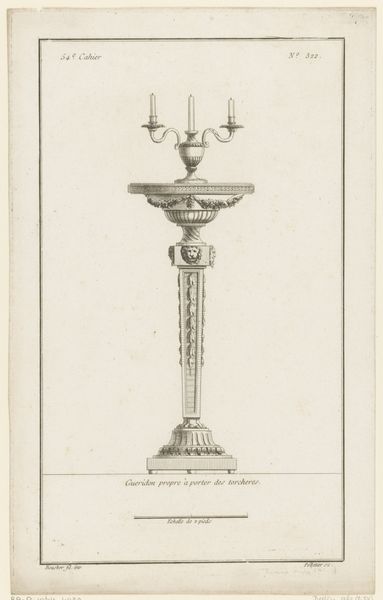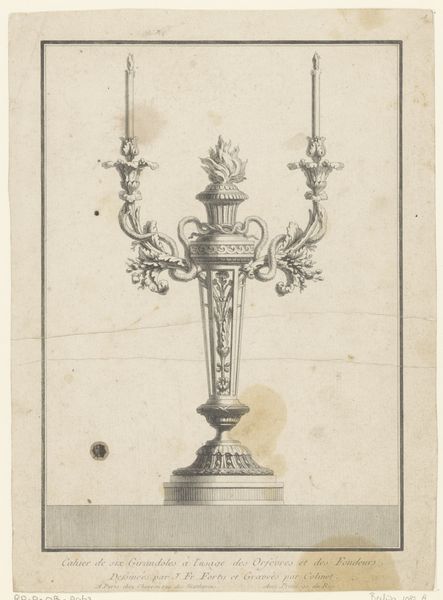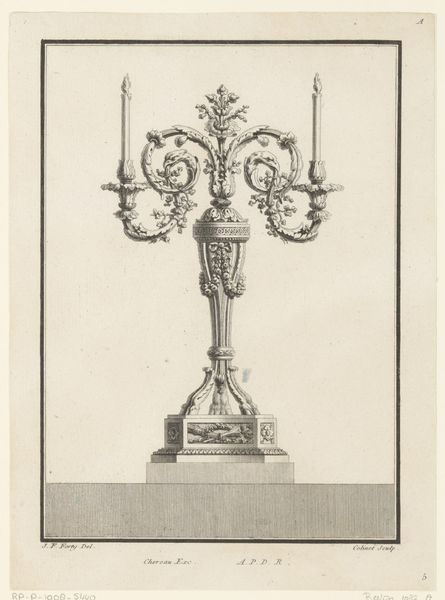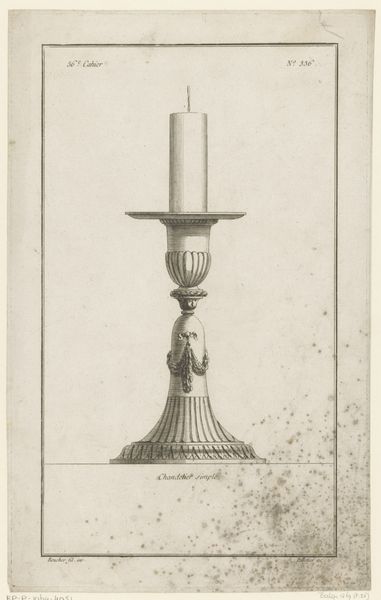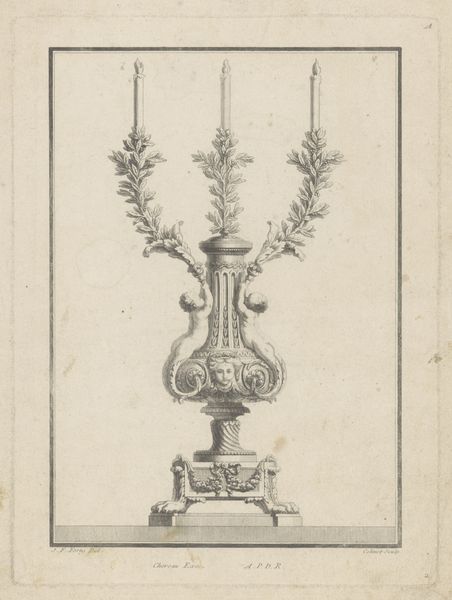
drawing, print, engraving
#
drawing
#
neoclacissism
# print
#
old engraving style
#
classical-realism
#
form
#
line
#
decorative-art
#
engraving
Dimensions: height 328 mm, width 205 mm
Copyright: Rijks Museum: Open Domain
Editor: Here we have Jean Pelletier’s "Kandelaar met guirlandes," an engraving dating back to the late 1770s, part of the Rijksmuseum collection. It depicts a design for a candelabra. It's strikingly formal, but I wonder how this translated into the actual interiors it was intended for. What do you see in this design beyond its classical lines? Curator: I see a potent reflection of the socio-political currents of its time. Neoclassicism wasn’t just a style; it was a deliberate embrace of order and reason that directly countered the perceived excesses of the Rococo. This return to "purity" also mirrored, perhaps unconsciously, the anxieties surrounding the aristocratic decadence leading up to the French Revolution. Notice how the severe vertical lines and balanced symmetry implicitly critique fluidity and embellishment. How do you read that tension between design and power? Editor: I hadn’t thought of it in terms of social commentary, but the restraint makes sense given the historical context. Does the medium itself, engraving, contribute to this feeling? Curator: Absolutely. Engraving, with its precise lines and reproducibility, aligns with the Enlightenment's emphasis on reason, science, and dissemination of knowledge. Think about who was commissioning and consuming these designs. Were they challenging or reinforcing existing social hierarchies? Was it an aspirational item only for wealthy nobles and aristocrats? What kind of statement do you think this domestic item makes in that era, especially when considering it’s neoclassical theme and ideals? Editor: That’s a perspective shift for me. I now view the candelabra not just as an object of beauty, but also as a complex statement on the prevailing social climate and power structures. Curator: Precisely! And hopefully this will give you an understanding that looking at an artwork beyond the artworld is very fruitful and allows a greater comprehension of historical objects.
Comments
No comments
Be the first to comment and join the conversation on the ultimate creative platform.
